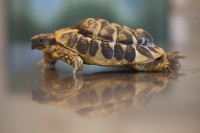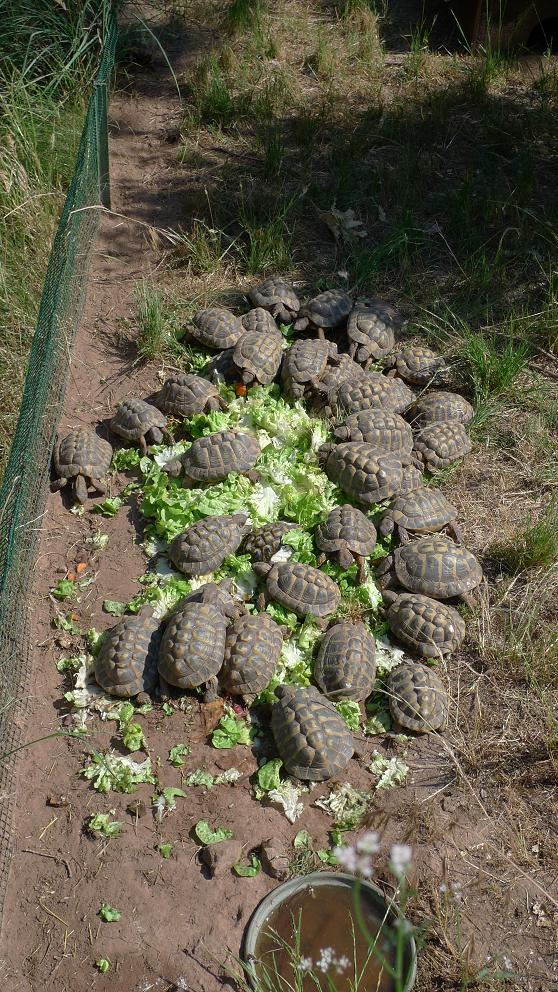Taking in the wild, captivity and releasing captive-bred individuals

Despite the taking of individuals being strictly prohibited by current legislation, it is still a frequent occurrence, whether it be occasional individuals or for commercial purposes.

The release of captive tortoises in the wild, whether exotic individuals (Greek tortoise or Balkan Hermann’s tortoises) or not (Western Hermann tortoises), endangers wild populations of turtles in transmitting disease.
It has been estimated that the number of captive Hermann’s tortoises in France is greater than the number of wild animals in their natural environment. Captive-bred tortoises are often in contact with and can hybridise with imported exotic species and sub-species (e.g. Greek or Balkan tortoises).
Several tortoise owners reintroduce those animals into the wild. However, the deliberate release of individuals of unknown origin can result in health and genetic problems, for example
This is why it is strongly recommended not to release captive-bred individuals into the wild.

The image of the Hermann’s tortoise is one of a very nice animal whose presence is considered accidental in nature. The belief that captivity protects dangers is false. These are indeed wild populations and their environments it is necessary to preserve.

Captive breeding often leads to difficulties related to the lack of space due to the multiplication of individuals. As is the case here, the turtles are distorted due to nutritional deficiencies.
